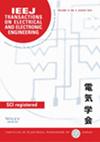求助PDF
{"title":"A Multi-Objective Evolutionary Algorithm Based on Bilayered Decomposition for Constrained Multi-Objective Optimization","authors":"Yusuke Yasuda, Wataru Kumagai, Kenichi Tamura, Keiichiro Yasuda","doi":"10.1002/tee.24200","DOIUrl":null,"url":null,"abstract":"<p>This paper proposes a multi-objective evolutionary algorithm based on bilayered decomposition (MOEA/BLD) for solving constrained multi-objective optimization problems. MOEA/D is an effective method for solving unconstrained multi-objective optimization problems. It decomposes the objective space using weight vectors and simultaneously searches for solutions for the subproblems. However, real-world applications impose many constraints, and these constraints must be handled appropriately when searching for good feasible solutions. The proposed MOEA/BLD treats such constraints as an additional objective function. Furthermore, in addition to the conventional weight vector, an augmented weight vector is introduced that decomposes the objective space and constraint violation space hierarchically. In the first stage, the objective space is decomposed by conventional weight vectors. In the next stage, the bi-objective space consisting of the scalarizing function and constraint violation is decomposed by augmented weight vectors. The augmented weights are adjusted so that they decrease linearly in the search process as the search gradually moves from infeasible regions to feasible regions. The proposed algorithm is compared to several state-of-the-art constrained MOEA/Ds using multi- and many-objective problems. The results show that the proposed method outperforms existing methods, in terms of search performance, under various conditions. © 2024 Institute of Electrical Engineers of Japan and Wiley Periodicals LLC.</p>","PeriodicalId":13435,"journal":{"name":"IEEJ Transactions on Electrical and Electronic Engineering","volume":"20 2","pages":"244-262"},"PeriodicalIF":1.0000,"publicationDate":"2024-10-06","publicationTypes":"Journal Article","fieldsOfStudy":null,"isOpenAccess":false,"openAccessPdf":"","citationCount":"0","resultStr":null,"platform":"Semanticscholar","paperid":null,"PeriodicalName":"IEEJ Transactions on Electrical and Electronic Engineering","FirstCategoryId":"5","ListUrlMain":"https://onlinelibrary.wiley.com/doi/10.1002/tee.24200","RegionNum":4,"RegionCategory":"工程技术","ArticlePicture":[],"TitleCN":null,"AbstractTextCN":null,"PMCID":null,"EPubDate":"","PubModel":"","JCR":"Q4","JCRName":"ENGINEERING, ELECTRICAL & ELECTRONIC","Score":null,"Total":0}
引用次数: 0
引用
批量引用
Abstract
This paper proposes a multi-objective evolutionary algorithm based on bilayered decomposition (MOEA/BLD) for solving constrained multi-objective optimization problems. MOEA/D is an effective method for solving unconstrained multi-objective optimization problems. It decomposes the objective space using weight vectors and simultaneously searches for solutions for the subproblems. However, real-world applications impose many constraints, and these constraints must be handled appropriately when searching for good feasible solutions. The proposed MOEA/BLD treats such constraints as an additional objective function. Furthermore, in addition to the conventional weight vector, an augmented weight vector is introduced that decomposes the objective space and constraint violation space hierarchically. In the first stage, the objective space is decomposed by conventional weight vectors. In the next stage, the bi-objective space consisting of the scalarizing function and constraint violation is decomposed by augmented weight vectors. The augmented weights are adjusted so that they decrease linearly in the search process as the search gradually moves from infeasible regions to feasible regions. The proposed algorithm is compared to several state-of-the-art constrained MOEA/Ds using multi- and many-objective problems. The results show that the proposed method outperforms existing methods, in terms of search performance, under various conditions. © 2024 Institute of Electrical Engineers of Japan and Wiley Periodicals LLC.

 求助内容:
求助内容: 应助结果提醒方式:
应助结果提醒方式:


